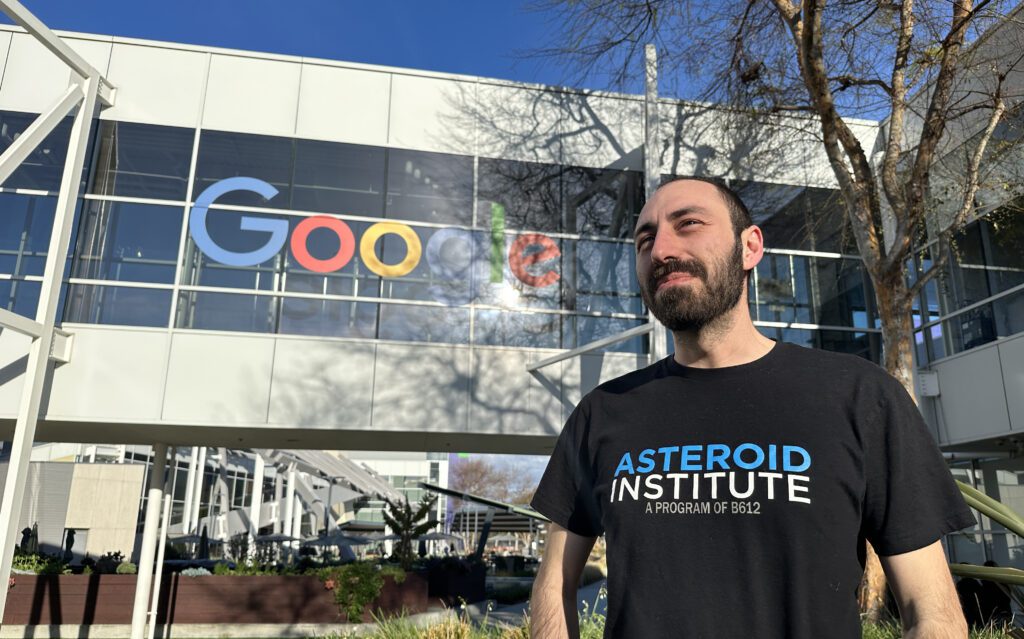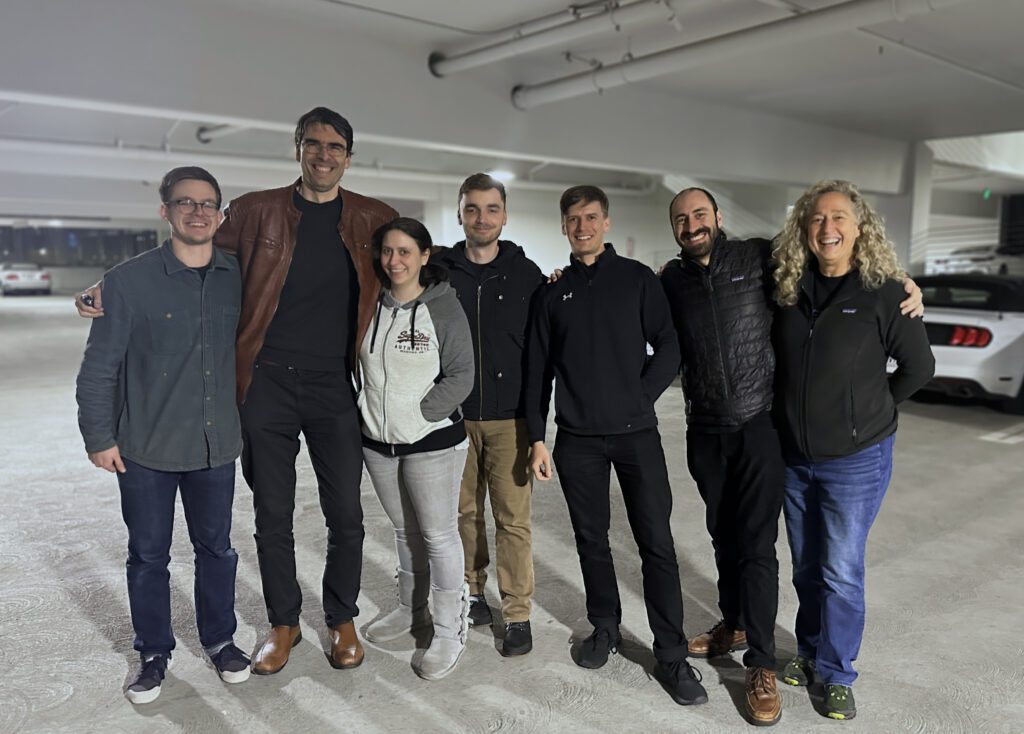The Asteroid Institute appoints Alec Koumjian as Head of Software Engineering
May 18, 2023

Alec Koumjian led the team at the Spring Hackathon at the Googleplex campus in Palo Alto.
The Asteroid Institute has named Alec Koumjian Head of Software Engineering. In his new position, he will spearhead a team of scientists and engineers dedicated to developing a comprehensive suite of astronomy software services. Their primary objective is to construct the Asteroid Discovery Analysis and Mapping (ADAM) platform, designed to encompass a wide range of functionalities, including asteroid discovery, solar system exploration, and dynamic visualization capabilities.
Alec brings a wealth of experience to the role, having led large software engineering projects for more than a decade, including as CTO with Nimia, Seattle. “Alec brings a broad set of technical leadership skills to our engineering and science team. His strong product definition, big data, and cloud infrastructure skill is already accelerating our technical innovation,” says Danica Remy, President of the B612 Foundation, who runs the Asteroid Institute.
Under Alec’s leadership, the Institute will complete the definition of its roadmap for the ADAM software platform. Alec will then drive the project forward, making sure it hits its mile markers. “Alec’s background in physics and naturally inquisitive nature has allowed him to rapidly understand the science, astrophysics and astrodynamics components we need to engineer into the ADAM platform,” says Ed Lu, former NASA astronaut and Executive Director of the Asteroid Institute.
We sat down with Alec to learn more about him and how modern software engineering techniques can benefit the work of the Asteroid Institute.
How can a modern software engineering approach benefit astronomy?
There are several significant ways in which modern software engineering and computing can actively transform astronomy as a field. Modern astronomy already requires a lot of software and computing. You have to collect, process, and then analyze the data coming in. Historically, you would have had to build all of those tools for yourself for each new survey. Not only is this an incredible amount of effort but it’s also a potential source for a lot of errors. Software written for one mission and used in isolation is much more likely to produce inaccurate results.
Great progress has already been made here for surveys and academic research by using open source tools and by sharing processes. Open source tools can be thoroughly tested (though not always the case!) and shared patterns can reduce the time to set up and get the data pipelines going. This still requires a lot of engineering effort to set up these computing environments.
The next stage in this evolution is about distilling the commonly used tools in astronomy into widely hosted and distributed services. This is a large part of what we’re doing at the Asteroid Institute. Orbit determination, linking algorithms like THOR, precovery, and hopefully other services like astrometry; these are all functions used widely across the different areas of astronomy that we have on our roadmap. Researchers and institutions will be able to call out to these services and as a result they won’t need to build their own scalable compute infrastructure. They will also get results they can trust due to how widely tested and used they will be.
We’re already building some unique datasets by pulling in observational data from many completed and ongoing surveys. This data is normalized and indexed continuously, letting us rebuild a unified observation dataset from the ground up and always keeping it up to date. The impact of this is in multiple dimensions. First is the ability to do analysis across datasets such as with precovery, or with THOR, paving the way for totally new discoveries.
Have you always had an interest in space?
I’ve been captivated by space almost as long as I can remember. I was definitely one of those kids that wanted to be an astronaut. As a young child, I remember my father describing how at his job at Barr Associates in Waltham, MA was making light filters and lenses that would be part of the Hubble and I found that really incredible.
What is your leadership style?
To give people space to solve problems. The challenges I’ve come against have largely been organizational. I joined the 60 person AI company, Faraday, as VP of Engineering when product development was at a standstill. The company had a lot going for it: expertise in a niche, a large team of fantastic engineers and data scientists, and plenty of vision for how they wanted to move forward. However, progress wasn’t being made because we were constantly putting out fires. It was unclear what the top priorities were, and if they were known, it was unclear what needed to happen to get from A to B. What I did was give people space to solve the problems that needed solving. For the development teams, that meant dedicating real time to scoping out our work. This wasn’t anything esoteric, we simply adopted the scrum framework, where a scrum team is a small and nimble team dedicated to moving a product forwards. For the product team, I leaned into suggestions from colleagues to get our roadmap organized. Honestly, that was most of it; soliciting and taking feedback from colleagues and using my management position to make it a reality. Before long, we were building features faster than the product team could define them.

What excites you the most about working for the Asteroid Institute?
How many people get the opportunity to work in planetary defense and mapping the solar system? It’s exciting to put my skills towards real science and be part of an effort to elevate astronomy with software engineering. Beyond the thrill of protecting our planet and the challenge of science based engineering, the Asteroid Institute is composed of kind, intelligent, and impressive people. That in and of itself is so highly motivating and enriching.
 About Stuart Clark
About Stuart Clark
Dr Stuart Clark is an award-winning science journalist and author, with a first class honors degree in astronomy and physics, a PhD in astrophysics, and an honorary DSc for “services to astronomy and the public understanding of science”. A Fellow of the Royal Astronomical Society in the UK, he writes the Guardian’s Starwatch column. His latest book is Beneath the Night: how the stars have shaped the history of humankind (Faber).
Follow Stuart:
Twitter
Facebook
His books can be found here.















